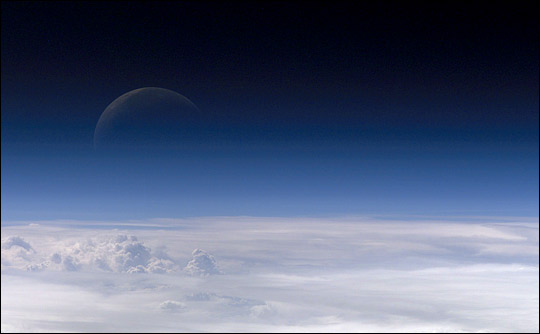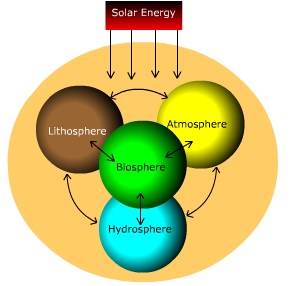To get the best understanding of EM possible, we have broken up how the Earth works into 4 "spheres," which if you look at your Cambridge syllabus, is the basic setup for both the course and the exam. The spheres are (in the order we will study them):
The LITHOSPHERE - The ground...sometimes referred to as "earth." Technically, the upper mantle of rock and crust that forms the tectonic plates upon which the continents lie. In this unit we will study the structure of the earth, natural hazards (tornadoes, hurricanes, etc), soil formation, erosion, human impacts on all of these, solutions to problems associated with them, and more.

The HYDROSPHERE - Water! The bodies of water, present as ice, liquid water, or water vapour. In this unit we will study how water is stored and transferred, human impacts on water, how to sustainably provide water to people all over the world, how to manage pollution of water, and more.


The ATMOSPHERE - The air! The gaseous shell outside the lithosphere and hydrosphere. In this unit we will study the structure and characteristics of the atmosphere, patterns of air movement, climate and weather, human impacts, management and effects of air pollution, and more.
The BIOSPHERE - The living organisms which occupy and use the other 3 spheres to sustain themselves. In this unit we will study ecosystems, human impacts on ecosystems, preservation and conservation, worldwide efforts to support ecosystems, population impact on ecosystems, and more.
Together, these spheres are why our world works and why we can live in it. Each has an impact on the others, and could not survive alone.



No comments:
Post a Comment